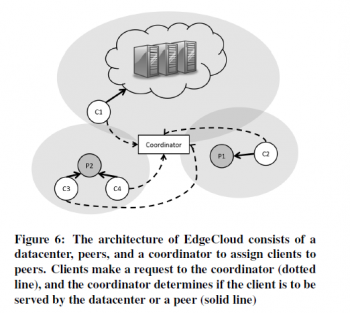Edge Cloud: Bringing Computing Close to the User: Difference between revisions
Appearance
PrateekRai (talk | contribs) |
PrateekRai (talk | contribs) |
||
| Line 11: | Line 11: | ||
** This is crucial for IoT devices, which generate massive amounts of data. | ** This is crucial for IoT devices, which generate massive amounts of data. | ||
[[File:Screenshot 2024-04-18 150719.png | | [[File:Screenshot 2024-04-18 150719.png | 350px | thumb | left | Edge Cloud]] | ||
Revision as of 19:44, 27 February 2025
Edge Cloud
Edge Cloud is a distributed computing paradigm that extends cloud capabilities closer to end users and devices. Instead of relying solely on centralized data centers, edge cloud leverages geographically distributed nodes to process data at the edge of the network, reducing latency and improving performance for real-time applications.
Key Benefits of Edge Cloud
Low Latency & Faster response times
By processing data closer to users, edge cloud reduces the delay in applications like autonomous vehicles, IoT, and AR/VR. For example, a smart city traffic system can analyze video feeds locally instead of sending everything to a distant cloud
Bandwidth optimization & Cost reduction
- Since data is processed near the source, less raw data needs to be sent to the cloud, reducing bandwidth usage.
- This is crucial for IoT devices, which generate massive amounts of data.
